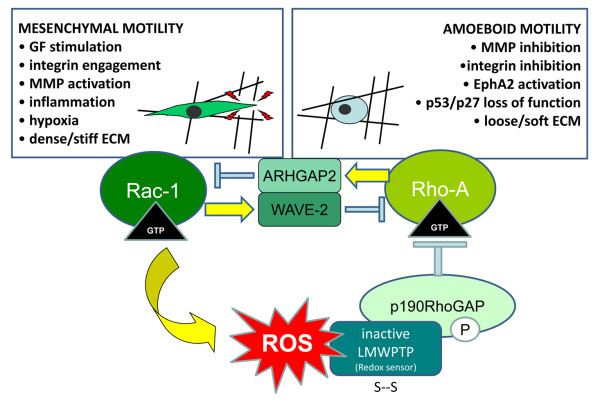Figure 2.
Reciprocal regulation between Rho and Rac during mesenchymal or amoeboid motility styles. ROS act as a balance for Rac-1/RhoA antagonism. Indeed Rac-1, which drives oriented mesenchymal motility, leading edge protrusion and lamellipodia formation, is a key molecular player of regulated intracellular ROS sources. Rho activation is responsible for amoeboid motility, a non-oriented movement which enables the cell to squeeze between gaps of ECM instead of proteolytically degrade it. Hence, upon Rac activation oxidation/inactivation of the LMW-PTP which normally activate the Rho regulator p190Rho-GTPase, leads to RhoA down-regulation. Conversely, low ROS intracellular content lead to RhoA activation, through LMWPTP activation and p190RhoGAP dephosphorylation/inactivation. Activated RhoA is able to inhibit Rac-1 through the ARHGAP2 (also named chimerin-2), while Rac1 activates WAVE2 which in turn inhibits RhoA.

